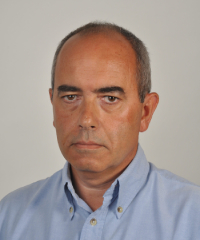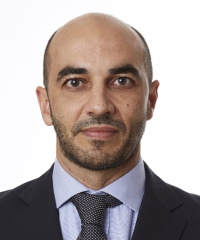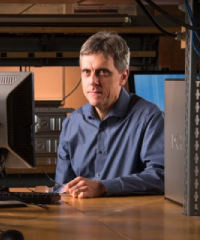Keynote #1
Title: New Challenges and Solutions to Network Resilience: A Practical Approach
Abstract: Communication networks have become a critical tool to guarantee the normal operation of businesses and activity sectors. The experience of disruption events in communication infrastructures has demonstrated the importance to avoid, or mitigate, the respective effects, especially if mission-critical services are involved. In the last few years, communication network technologies have undergone profound changes: network virtualization, network programmability, slicing, edge computing, AI/ML are examples of evolutions that had a significant impact on design, operation, management and control of communication networks. 5G can be seen as a convergence point of these evolution trends and the catalyst for a widespread acceptance and adoption by the industry and users at large.
Inevitably, network resilience and reliability need to be reassessed in the light of the challenges and opportunities raised by the new technological environment. In particular, 5G standardization has devoted attention to this topic, through the definition of the URLLC (Ultra-Reliable Low Latency Communications) service category, aimed at providing a solution for challenging use cases such as factory automation, autonomous driving, smart grid or robotic healthcare solutions.
This keynote will provide a general overview of emerging directions for communication technologies, and how they will shape reliability and resilience of future networks. Activities in this field conducted by Altice Labs and respective lessons learned will be presented.

Jorge Carapinha
(Altice Labs, Portugal)

Jorge Carapinha
(Altice Labs, Portugal)
Bio: Jorge Carapinha graduated in Electrical and Computer Engineering in 1984 from the University of Coimbra and received the MSc in Electronics and Telecommunications in 1998 from the University of Aveiro. He has been with Altice Labs (formerly Centro de Estudos de Telecomunicações and PT Inovação) since 1985 and has a long experience in technical areas such as Conformance Testing, IP/MPLS Technologies and Services, Quality of Service and Network Virtualization. He has a long record of participation in international collaborative research projects in the framework of European R&D programmes, namely IST, ACTS, FP7, Eurescom and H2020, some of which in a leading role. Lately his fields of interest have been mainly focused on Cloud Networking, Software Defined Networking, Network Automation, Edge Computing, Network Slicing and 5G. He is currently coordinating the Portuguese 5G experimental facility site, in the framework of 5G-PPP 5G-VINNI project. He has been involved in relevant standardization initiatives, e.g. ETSI NFV ISG. He has authored or co-authored technical papers published in major technical and scientific journals or conferences and has also collaborated regularly as reviewer of relevant technical publications.
Keynote #2
Title: Designing and Operating Content Aggregation & Content Delivery Networks in scenarios of high availability and high resilience – A Broadcasting perspective of the Tokyo 2020 Summer Olympic Games.
Abstract:
With the world’s TV viewers cooped up for a year and spectators barred from attending, never has there been a more pressing need for the International Olympic Committee (IOC) to put on the greatest sport show on Earth.
The host broadcaster, the IOC-owned Olympic Broadcasting Services (OBS), has been experimenting with new digital technologies over successive Games and this year it will unleash most of them. It promises a visual and data-rich feast in which IP, cloud, 5G and AI are all breaking the conventional frame of broadcast production and transforming the fundamentals of content delivery and viewers’ experience. The ambition is to deliver “the most realistic experience one can get from viewing a sporting event without actually attending in person”.
OBS plans to produce 9500 hours of content in just over two weeks (of which 3800-4000 hours will be live). It includes 118 HD contribution multilateral feeds, 68 UHD contribution multilateral feeds, 76 HD distribution feeds and 44 UHD distribution feeds, including more than 1,000 camera systems and 3,600 microphones.
To deliver this content across the globe, OBS put in place an OTN delivering above 2 Tbps of capacity from the International Broadcasting Center located in Tokyo. This network is the spine for all the additional networks (IP, Satellite) and the associated Service Layer (High Definition and Ultra High Definition with HDR and 5.1.4 immersive audio, (Over-The-Top) (OTT) delivery, short-form content, multi-clip feeds, …). In this workshop we will be tackling on how OBS together with its partners, designs and operates the telecommunications networks put in place for the aggregation and distribution of content and related data during the Olympic Games so to ensure a smooth and immersive experience to all the sport fans around the globe. Fault tolerance and permanent availability are key requirements. Design strategies will be shared, and business continuity/disaster recovery scenarios will be addressed.

Mario Reis
(Director of Telecommunications & OTT at Olympic Broadcasting Services)

Mario Reis
(Director of Telecommunications & OTT at Olympic Broadcasting Services)
Bio:In Olympic Broadcasting Services (OBS) since 2010, Mario Reis is the Telecommunications and Over-The-Top (OTT) director. He is in charge of the telecommunication networks supporting both Content Aggregation and Content Distribution. Since 2014, took over the development of OBS OTT platform designed with a special focus on live broadcasting and sports data visualization. From 2018 is in charge of cloud adoption and development for broadcasting-related workflows and did launch the OBS Cloud service. Recently, is leading the 5G case development for Live Sports broadcasting and production, with the aim to bring into service during the upcoming Winter Games taking place in Beijing in 2022.
Before joining OBS, he did spend 10 years in Nokia Networks, leading both mobile networks design and optimization with exposure in Americas and Europe. The last years within Nokia hold several positions in the systems integration and consulting business unit in the areas of provisioning, BSS, OSS and network planning.
Keynote #3
Title: Towards Structural Resilience of Next Generation Cellular Networks
Abstract: Future cellular networks will be built around supporting both people and things with dynamic composable services. The vision is that of mobile network infrastructure as a service leveraging software defined networking, mobile edge-to-cloud computing and ubiquitous virtualization to provide customized network slices with performance guarantees on demand. This vision is enabled by a range of new technologies such as configurable multi-band transceivers, flexible spectrum management, cell free massive MIMO, mobile edge computing, AI/ML based network management, and reconfigurable intelligent surfaces to control radio propagation, to name a few. While the new technologies will undoubtable expand the range of services and support new unimagined applications, they will increase dependence on these networks which will require greater resilience than current networks can provide. In this talk we survey potential techniques that can leverage the new cellular network technologies to provide self-adaptation to support high levels of resilience in the face failures and attack. Furthermore, we provide a framework for to provide dynamic resilience estimates and adaptation and outline open research problems to achieve resilience goals.

David Tipper
(University of Pittsburgh, USA)

David Tipper
(University of Pittsburgh, USA)
Bio: David Tipper is a Professor in the Department of Informatics and Networked Systems in the School of Computing and Information at the University of Pittsburgh. He was Director of the Graduate Telecommunications and Networking Program at the University of Pittsburgh from 2007 to 2014. He is a graduate of the University of Arizona (PhD, MS) and Virginia Tech (BS). His current research interests are resilient critical infrastructures, network design, time varying performance and reliability analysis techniques. His teaching and research has been supported by grants from corporate and government organizations such as, NIST, National Science Foundation, Army Research Office, AT&T Foundation and IBM.
Acknowledgments:
This Workshop is funded by ERDF Funds through the Centre’s Regional Operational Program and by National Funds through the FCT – Fundação para a Ciência e a Tecnologia, I.P. under the project CENTRO-01-0145-FEDER-029312.







